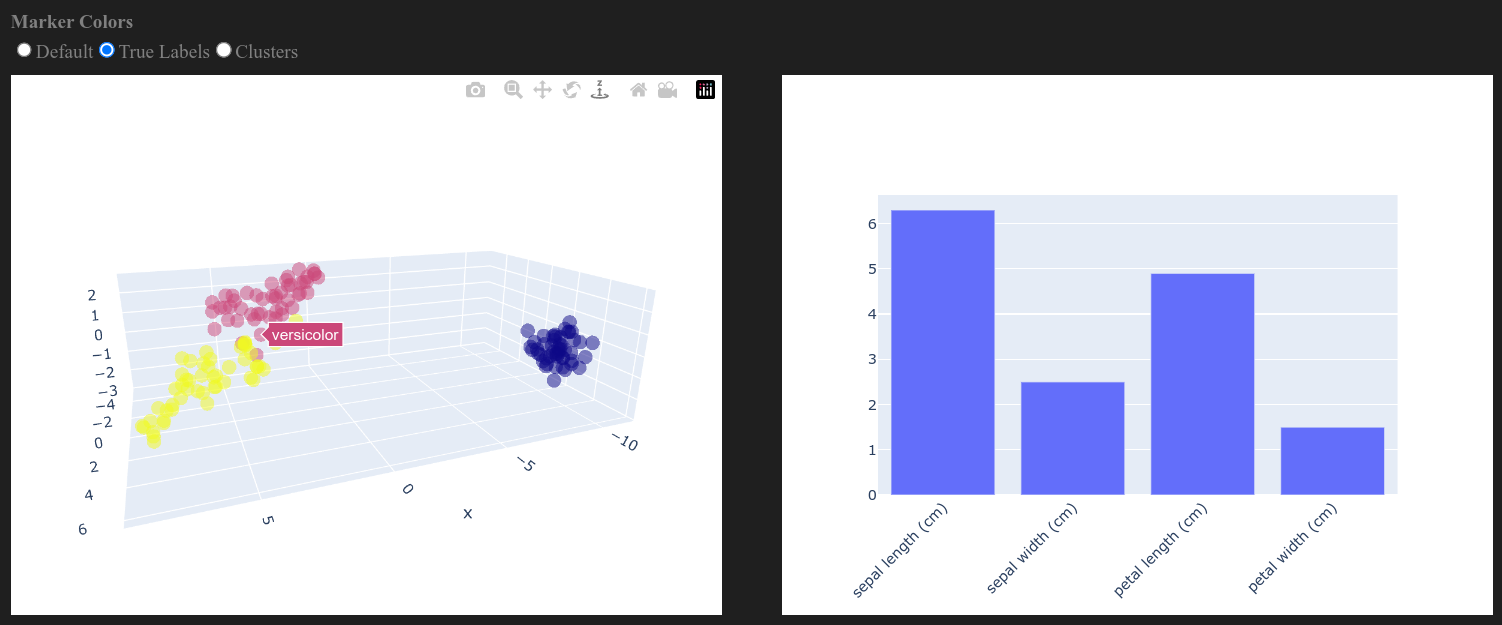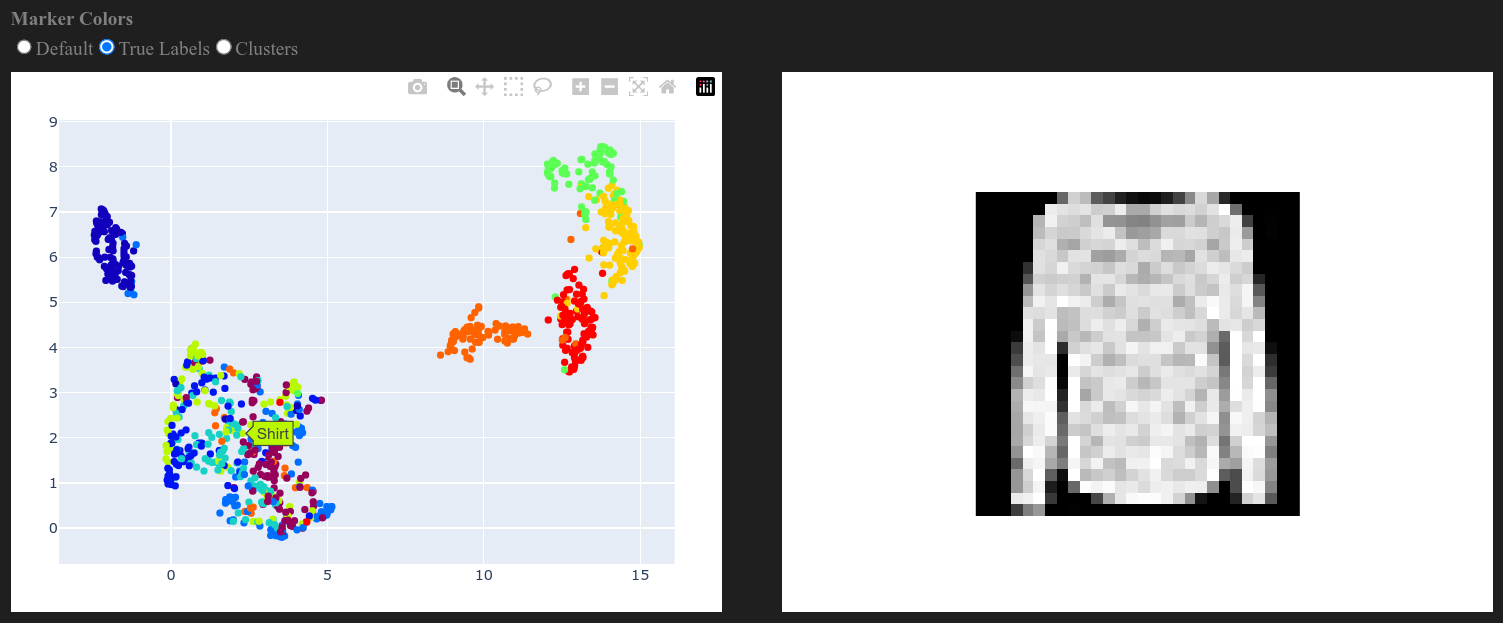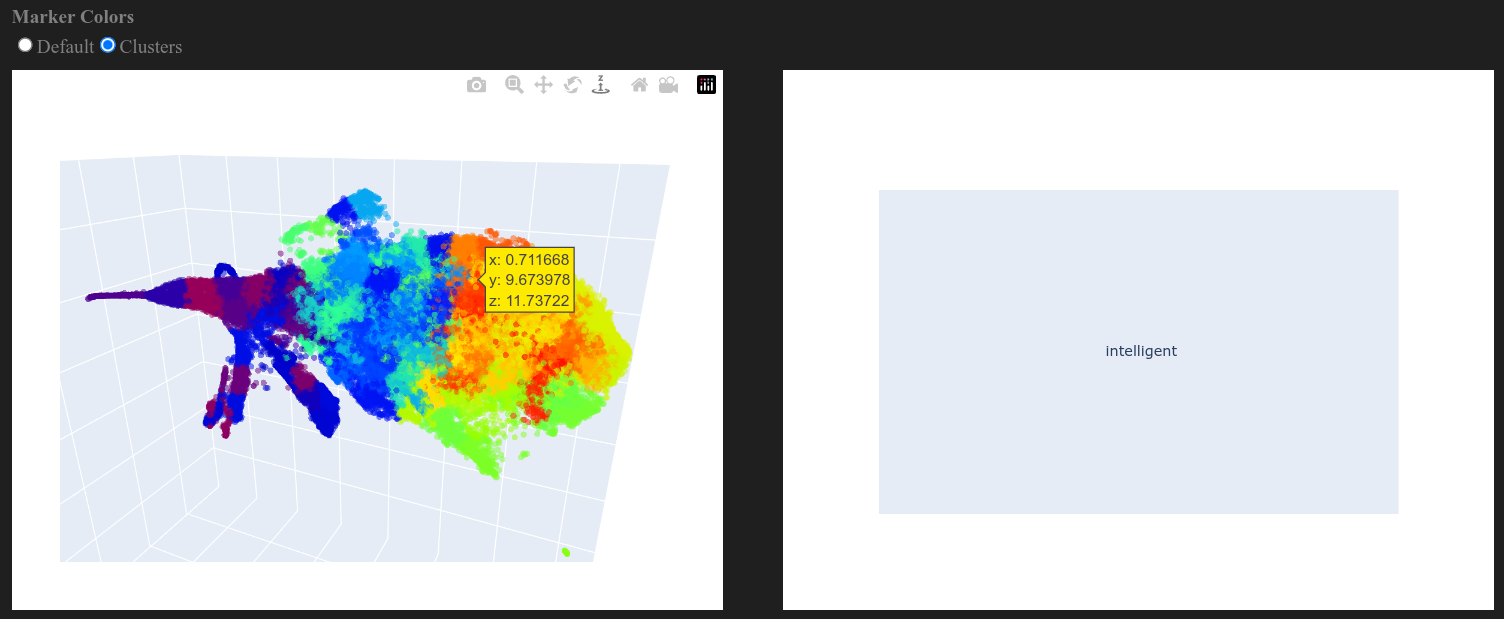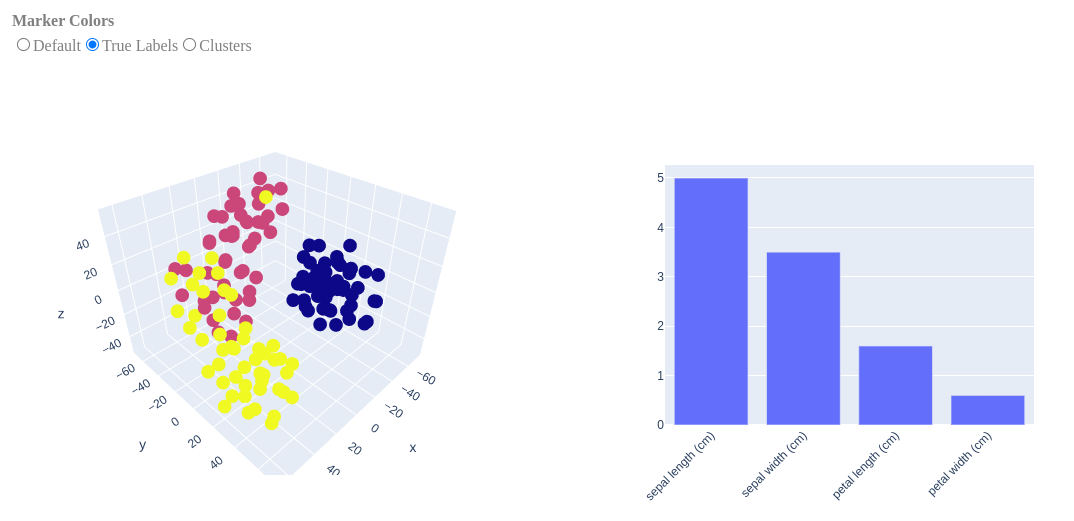InterDim is a Python package for interactive exploration of latent data dimensions. It wraps existing tools for dimensionality reduction, clustering, and data visualization in a streamlined interface, allowing for quick and intuitive analysis of high-dimensional data.
- Easy-to-use pipeline for dimensionality reduction, clustering, and visualization
- Interactive 3D scatter plots for exploring reduced data
- Support for various dimensionality reduction techniques (PCA, t-SNE, UMAP, etc.)
- Multiple clustering algorithms (K-means, DBSCAN, etc.)
- Customizable point visualizations for detailed data exploration
You can install from PyPI via pip (recommended):
pip install interdimOr from source:
git clone https://github.com/MShinkle/interdim.git
cd interdim
pip install .Here's a basic example using the Iris dataset:
from sklearn.datasets import load_iris
from interdim import InterDimAnalysis
iris = load_iris()
analysis = InterDimAnalysis(iris.data, true_labels=iris.target)
analysis.reduce(method='tsne', n_components=3)
analysis.cluster(method='kmeans', n_clusters=3)
analysis.show(n_components=3, point_visualization='bar')This will reduce the Iris dataset to 3 dimensions using t-SNE, clusters the data using K-means, and displays an interactive 3D scatter plot with bar charts for each data point as you hover over them.
However, this is just a small example of what you can do with InterDim. You can use it to explore all sorts of data, including high-dimensional data like language model embeddings!
For more in-depth examples and use cases, check out our demo notebooks:
-
Iris Species Analysis: Basic usage with the classic Iris dataset.

-
DNN Latent Space Exploration: Visualizing deep neural network activations.

-
LLM Token Analysis: Exploring language model token embeddings and layer activations.

For detailed API documentation and advanced usage, visit our GitHub Pages.
We welcome discussion and contributions!
InterDim is released under the BSD 3-Clause License. See the LICENSE file for details.
For questions and feedback, please open an issue on GitHub.



